116
Lesson 3:
Learning Objectives
- Identify different types of waste and understand the importance of proper waste management.
- Evaluate different waste management strategies and understand the implications of improper waste disposal.
Introduction
Solid waste management has been defined as the “systematic control of generation, collection, storage, transport, source separation, processing, treatment, recovery, and disposal of solid waste. Solid waste management is a basic need of communities. Just like access to clean drinking water, shelter, food, energy, transport, and communications are essential to society, managing solid waste in a sustainable manner is essential to human and environmental health and wellbeing.
While it is difficult to assess the size of the problem, evidence shows that the costs to society and the economy for poorly managing solid waste may be 5-10 times more than what sound solid waste management would cost per capita. It is dramatically cheaper to manage waste now in an environmentally sound manner than to clean up the “sins of the past” in future years
Legislation and Responsibility
Provincial and territorial authorities establish waste reduction policies and programs and approve and monitor waste management facilities and operations including: incinerators, landfills and composting facilities. Municipalities are responsible for the collection, recycling, composting and disposal of household waste. Regulation of First Nation solid waste management falls under the Indian Act, the First Nations Land Management Act (FNLMA), under the provisions of a modern treaty, or the inherent right to self-government. Although solid waste management is not specifically referenced, First Nation Band Councils have authority under section 81 of the Indian Act to “provide for the health of residents on the reserve and to prevent the spreading of contagious and infectious diseases” and “the construction and maintenance of…other local works”. These can be interpreted to include the management of solid waste. The Indian Reserve Waste Disposal Regulations 1978 set out prohibitions, permits, penalties for solid waste management on reserve, under the authority of the Minister of Indigenous and Northern Affairs Canada.
Addressing solid waste management allows a community:
- To protect the public and the environment (air, water, land) from the potentially harmful health effects of waste;
- To minimize waste and compost, recycle, re-use, re-sell as much as possible to use scarce resources wisely;
- To maximize the economic development aspects of solid waste management, including increasing jobs, producing renewable energy, returning valuable goods to the economy;
- To educate and raise awareness about efficiency in solid waste management; and
- To reduce the generation of waste as much as possible thereby reducing solid waste management costs and reducing the burden on the environment.
The 5 R’s – Reduce, Reuse, Recycle, Recover, and Residuals
Northerners are resourceful people with a long history of conservation and protection of resources. For example, for the Dene, caribou are life. Their flesh is used for food, and historically, their bones for tools, and their fur for insulation and bedding.
The Dene, like many other Indigenous peoples, were the ultimate recyclers. Over the past 75 years, Northerners have experienced significant changes to their way of life. Just like in the rest of Canada, new lifestyles have changed the type and quantity of waste that is generated. That said, people can return to their roots and draw on their traditional and local knowledge to improve waste management through practices such as reuse, recycling, and composting. After all, many Northerners still depend on the land for country food and have a deep understanding of the importance of keeping the land, water, and air clean.
Reduce and Reuse
A good step in reducing the amount of waste produced is to reduce the amount of packaging in purchased products. While a lot of this is dictated by how vendors decide to package products, there may be creative options to reduce the amount of unnecessary packaging in received goods.
Reuse can be accomplished in the community. Where community members have items that are not useful to them, they may be useful to others. An idea is to set up an exchange area where items that still have useful life can be dropped off and picked up by other people who can make use of them. As a specific example, the city of Saskatoon advertised a program where, on a specific set of days, people could place unwanted items on the sidewalk for other people to take. All items needed to be removed by the end of the time period.
Recycling
Recycling is a difficult thing for northern communities because it is prohibitively expensive to transport goods to recycling facilities. However, the difficulty can create opportunities. Through the collaboration of nearby municipalities and Indigenous communities, along with partnerships with various levels of government and industry, shared facilities can be built. This can be an opportunity to generate revenue and increase employment and innovation.
Composting (a form of recycling) is an achievable means to reduce a large amount of organic waste going into landfills. Proper composting can generate mulch and soil amendment that can be used within the community. According to the Federation of Canadian Municipalities: “Next to recycling paper, composting yard waste and kitchen scraps is the largest impact First Nations and municipalities can have on reducing the amount of solid waste going to landfill sites.”
Static piles, windrow composting, and vermicomposting have low technology demands and can be implemented with only a small investment.
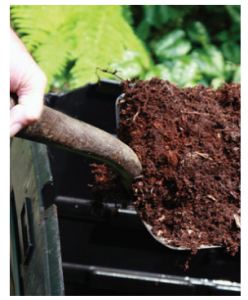
Vermicomposting adds specific worms to speed the process. This must be done indoors, but the excrement from the worms is a powerful fertilizer. There may be some economic spin off from this process.
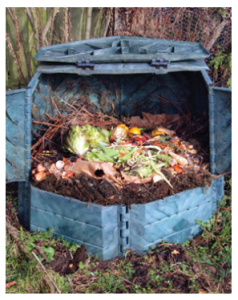
Enclosed or in vessel composting may be required in northern communities where wildlife can pose a problem.
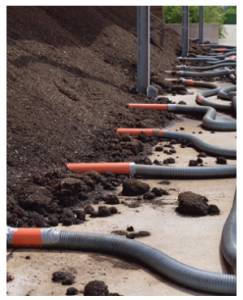
Forced aeration composting has blowers to force air into the compost pile.
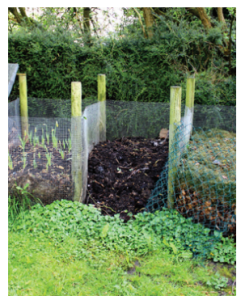
Windrow composting piles organic matter in long rows on the ground. The rows may be strategically placed so that snow is captured for additional moisture in the spring.
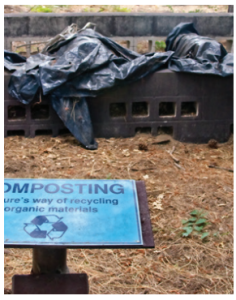
Passively aerated windrows have perforated pipes to allow air circulation. Oxygen is a necessary component of successful composting.
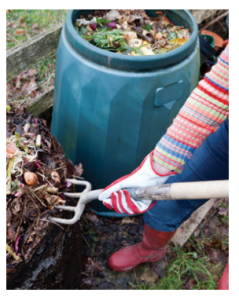
Static piles are excellent for the homeowner. A small amount of compost can be turned to aerate by hand.[1]
Case Study: City of Saskatoon Green Cart Program
Read the following article about the composting program in Saskatoon.
Recovery
It is now possible to recover energy in the form of heat, electricity, or steam from waste. Systems such as incineration with energy recovery, gasification, thermal chemical reactions (pyrolysis), and anaerobic systems are modern means of energy-from-waste generation that require a high initial investment. These methods may still be feasible with the possibility of increased employment and revenue generation, by collaborating with surrounding communities and outside investment.
Residuals
The bottom line is, even after reduction, reuse, recycling, and recovery, there will still be material to put into a landfill. Final waste treatment options such as landfilling have environmental impacts, including releases of pollutants to air and water. Today, by using advanced pollution control technologies and modern engineering, the health and environmental effects of waste disposal can be reduced.
Types of Community Waste
There are several different types of community waste, which can be categorized based on their characteristics and sources. Here are some common types of community waste:
- Municipal Solid Waste (MSW)
This is the most common type of waste generated by households, businesses, and institutions. It includes everyday items such as packaging materials, food waste, paper, plastic, glass, textiles, and non-hazardous household chemicals. - Hazardous Waste
This category includes waste materials that pose a risk to human health or the environment due to their toxic, flammable, corrosive, or reactive nature. Examples of hazardous waste include batteries, paint, solvents, pesticides, electronic waste (e-waste), and certain pharmaceuticals. - Construction and Demolition Waste (C&D)
Generated from construction, renovation, and demolition activities, C&D waste includes materials like concrete, wood, bricks, metals, plastics, glass, and insulation. It can be a significant portion of community waste during periods of construction boom. - Electronic Waste (e-waste)
This refers to discarded electronic devices and appliances, such as computers, laptops, smartphones, TVs, refrigerators, and other electrical or electronic equipment. E-waste contains valuable metals and hazardous materials, requiring special handling for proper recycling and disposal. - Biodegradable Waste
This category includes organic waste that can decompose naturally over time. It consists of food scraps, yard trimmings, paper products, and other organic materials. Proper management of biodegradable waste can help divert it from landfills and promote composting or anaerobic digestion. - Medical or Healthcare Waste
Generated by hospitals, clinics, laboratories, and other healthcare facilities, this waste includes sharps (needles, syringes), expired medications, pathological waste, contaminated materials, and other biomedical waste. Due to the potential for disease transmission, medical waste requires specialized handling and disposal methods. - Industrial Waste
Generated by manufacturing processes, industries, and commercial activities, this waste can vary significantly depending on the specific industry. It may include wastewater, chemical residues, toxic substances, heavy metals, sludge, and other byproducts. Industrial waste often requires specialized treatment or disposal methods. - Agricultural Waste
This waste category comprises waste generated by agricultural practices, such as crop residues, manure, agricultural chemicals, packaging materials, and discarded agricultural equipment. Proper management of agricultural waste is important to minimize environmental impact and promote sustainability. - Plastic Waste
Plastic waste has gained significant attention due to its persistence in the environment and detrimental effects on ecosystems. It includes various plastic products, packaging materials, single-use items, and microplastics. Recycling, reduction, and responsible disposal are crucial for mitigating plastic pollution. - Automotive Waste
This waste category includes used motor oil, automotive fluids, tires, batteries, and other automotive parts. These items require specialized handling and disposal methods to prevent contamination and environmental damage - Organic Waste
This category includes biodegradable waste such as food scraps, yard trimmings, and other plant or animal-based materials. Organic waste can be composted to produce nutrient-rich soil amendments. - Water and Sewage Waste
Waste generated from wastewater treatment plants and sewage systems, including organic matter, chemicals, and other pollutants.
It is important for communities to adopt effective waste management practices, including recycling, composting, waste reduction, and proper disposal, to minimize the environmental impact of different types of waste.
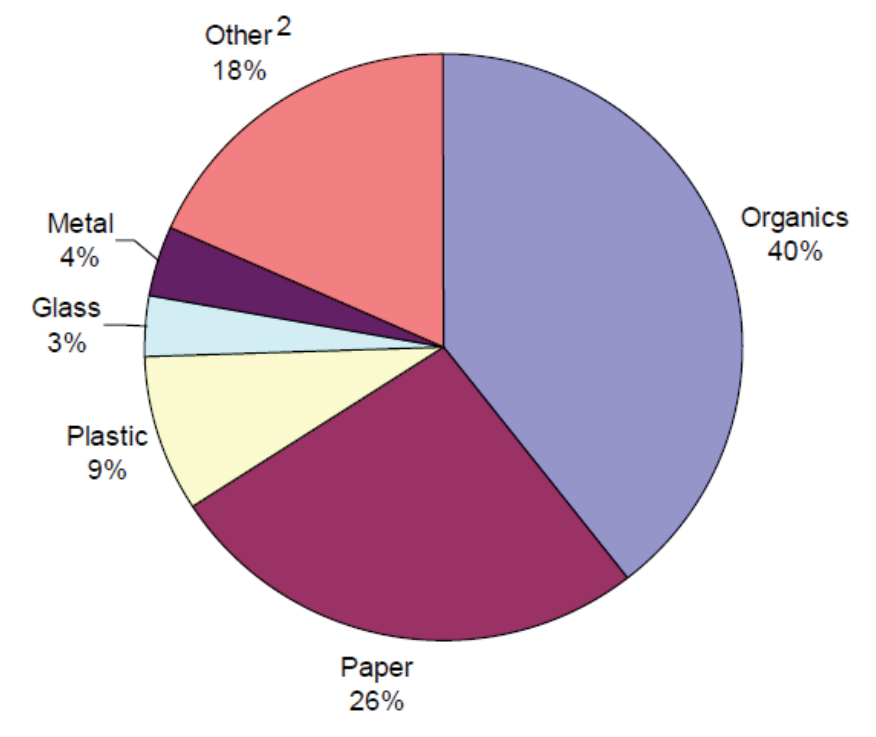
Notes (from site): 1. The figure does not represent the composition for any identifiable Canadian community. Rather, it is a national average of various municipal waste composition studies performed across Canada; 2. The other wastes category includes materials such as animal waste, textiles, tires and wood
Impacts of Improper Waste Management
Improper waste management can have numerous negative impacts on the environment, public health, and the overall well-being of communities. Here are some key consequences.
Environmental Polution
When waste is not properly managed, it can lead to pollution of air, water, and soil. Dumping waste inappropriately or in unregulated areas can contaminate water bodies, harm aquatic life, and disrupt ecosystems. Improperly managed landfills can release harmful gases, such as methane, a potent greenhouse gas that contributes to climate change.
Air Pollution
Organics
When organic wastes – such as food, yard and paper – are disposed in landfills, they produce methane, a powerful greenhouse gas. This process occurs over many years, which means that the methane generated in landfills today is the result of decades of disposal of organic waste.
According to Canada’s Greenhouse Gas Inventory, in 2020:
- Emissions from Canadian landfills account for 23% of national methane emissions.
- About 1,401 kilotonnes (kt) of methane were generated, 418 kt were recovered and 885 kt of methane (equivalent to 22 Mt CO2) were emitted.
- Of the recovered methane used to create energy, 52% was used to generate low-carbon electricity, 17% to produce renewable natural gas and 30% was used directly at a nearby facility.
By installing landfill gas management systems, methane is recovered before it can be emitted to the atmosphere. The recovered landfill gas is either flared (burned) or used to create low-carbon energy. There are over 100 landfills in Canada that have systems in place to recover landfill gas.
Recovered landfill gas and biogas generated from organic waste can be utilized to:
- generate electricity
- produce renewable natural gas
- fuel industries
- heat buildings
The energy from biogas can replace non-renewable sources of energy such as coal, oil, or natural gas. The material remaining after the digestion process is called digestate. It is rich in nutrients and is used to fertilize soils, increasing the organic matter content and reducing the use of synthetic fertilizers.[2]
Case Study: City of Saskatoon Landfill Gas Collection and Power Generation System
Read the following article about the City of Saskatoon Landfill Gas Collection and Power Generation System.
Burning Waste
Burning waste, especially in open-air or uncontrolled incineration practices, releases toxic pollutants into the air. These pollutants can have detrimental effects on air quality and contribute to respiratory problems and other health issues for nearby communities.
Environment and Climate Change Canada advise that burning garbage is harmful to health and the environment pertaining mainly to the smoke produced. Short term effects of smoke are like those of any other air pollution: headache, nausea, rash. Over time there is a risk for developing disease due to the following common toxins:
- Dioxins
- Furans
- Arsenic
- Mercury
- PCBs
- Lead
- Carbon monoxide
- Nitrogen oxides
- Sulphur oxides
- Hydrochloric acid
A note on dioxins, furans, and PCB’s
One of the greatest concerns with open burning of garbage is the health risks posed by the release of dioxins and furans into the environment. Exposure to dioxins and furans has been linked to:
- Certain types of cancers
- Liver problems
- Impairment of the immune system, the endocrine system, and reproductive functions
- Effects on the developing nervous system and other developmental events.
In Canada, the open burning of garbage produces more dioxins and furans than all industrial activities combined.
Since open burning of garbage is more common in rural and agricultural areas, there is particular concern for high levels of dioxins and furans settling on crops, in our streams, and in our lakes. Dioxins and furans produced by the open burning of garbage are deposited on plants, which are eaten by animals. The dioxins and furans are absorbed by these animals and stay in the food chain until they ultimately end up in our meat and dairy products. In fact, over 90 percent of our intake of dioxins and furans is from our diet.
Canada has an implementation plan for standards on federal incinerators which calls for the effective elimination of Dioxins and Furan emissions.
Modern incineration is a type of thermal treatment recognized as an effective method for eliminating a wide range of wastes. Different types of incinerators are used in Canada such as Waste-to-Energy (WTE) facilities, municipal wastewater sludge incinerators, hazardous waste incinerators and biomedical incinerators.
Incineration can reduce the volume of MSW by 90%. Today, incinerators use advanced air pollution controls and can include technologies that remove 99% of the dioxins and furans emitted from incineration.
In Saskatchewan, municipalities operating a waste incinerator are required to obtain a permit. Applying for a permit requires:
- A self-assessment of expected environmental impacts
- Air quality standards and testing. Standards are regulated by the Saskatchewan Ambient Air Quality Standards. Stack test data (emissions data) can be obtained before purchase. Stack testing is required regularly during the operation of the incinerator.
- Residual Ash Testing. The ash is tested for heavy metals, mercury and organics (dioxins, furans, and PCBs).
- Environmental Protection Plan- This is a plan to monitor emissions performance, mitigate risk of environmental and health damage, and remedy or reclaim an adverse effect.
The total cost associated with a responsible incineration facility include:
- Equipment
- Fuel
- Ash disposal
- Operator training
- Maintenance
- Waste diversion/ recycling
- Air monitoring
- Ash analysis
- Analysis and document preparation
Soil and Water Pollution
Soil and water pollution are discussed in the next lesson.
Health Risks
Improper waste management can pose serious health risks to individuals and communities. Exposure to hazardous or infectious waste can lead to the spread of diseases, respiratory ailments, skin infections, and other illnesses. Poor waste management practices, such as open dumping or scavenging in waste sites, can increase the risk of injuries and infections.
Improper waste management can attract pests, such as rats, flies, and mosquitoes, which can carry disease-causing pathogens. Inadequate waste disposal systems can provide breeding grounds for these vectors, leading to the spread of diseases like dengue fever, malaria, cholera, and other gastrointestinal illnesses.
Impact to Wildlife
Improperly disposed of waste can harm wildlife and marine life. Animals can mistake
plastic waste for food, leading to ingestion and entanglement, which can cause injuries, suffocation, or even death. Marine ecosystems are vulnerable to plastic pollution, disrupting food chains and endangering marine species.
Other Impacts
Some other impacts of improper waste management are:
- Aesthetic and Tourism Impact: Improper waste management can negatively impact the aesthetics of an area, reducing its appeal for tourism and affecting the local economy. Littered streets, polluted beaches, and unsightly waste sites can deter visitors and lead to economic losses for communities dependent on tourism.
- Resource Depletion: When waste is not properly managed, valuable resources that could be recycled or reused are lost. This includes materials like metals, paper, plastics, and organic waste that could have been turned into compost or energy through proper waste management practices.
- Increased Costs: Improper waste management can result in higher costs for communities. Waste cleanup, environmental remediation, and healthcare expenses related to waste-related illnesses can place a financial burden on local governments and taxpayers.
Landfilling
Landfilling is the primary method of municipal waste disposal in Canada. Modern municipal solid waste (MSW) landfills are designed and located to minimize the impacts on the social and natural environment as much as possible. When equipped with the proper technology, landfills can capture greenhouse gases which then can be used to produce energy or renewable natural gas.
It is important to know that even modern MSW landfills are not suitable for the disposal of hazardous waste. Such waste should only be disposed of in hazardous waste landfills. Hazardous waste landfills incorporate extra environmental protective measures, store wastes in a secure manner, while any potential emissions are minimized and carefully monitored.
Planning a Landfill
- Protecting Human Health and the Environment. A landfill must be planned to minimize or eliminate pollutants that are harmful to health and the environment. As discussed, the pollutants may be air based such as the release of methane, or ground based, such as leachate seeping into the soil and groundwater.
- Unique Circumstances. Northern communities have unique circumstances that require unconventional waste management techniques. For example, if the community is only accessible by road for part of the year, landfill management, and particular hazardous waste management, can be a challenge. Also, in communities of only a few hundred people, the costs of a landfill may be burdensome. In this case, it may be economical to partner with near by communities to share facilities and costs.
- Community Engagement and Awareness: To have successful waste management, community buy in is essential.
- Partnerships and Synergies: As discussed, partnerships with neighboring communities can help reduce costs and increase efficiencies. An excellent document on this topic is the Federation of Canadian Municipalities, First Nation – Municipal Community Infrastructure Partnership Project “Solid Waste Management Toolkit.”
- Continuous Improvement: Set goals for improvement and maintain records to indicate progress towards success.
Developing a waste management plan is a key step in planning a landfill. This plan should consider:
- At least 30 years of operation and plan for regular 5- year reviews
- The current state of the landfill
- The waste characteristics and projections of the volume of waste that will be created.
- The design and location of the landfill, taking into consideration all provincial and federal regulations. The location needs to consider the type of soil and water table level, as well as open water proximity. Wildlife migration patterns and access to transportation also need to be considered.
- A community engagement and communication plan
Be prepared for the ongoing costs of the landfill. When developing a total cost, consider:
- Daily or weekly site control and maintenance, including proper covering and monitoring waste type.
- Waste screening and segregation
- Shipping certain waste types (hazardous waste) off site
- Health and safety of employees, for example PPE, work shelters and facilities
- Maintaining an emergency response plan
- Wildlife management
- Testing and record keeping.
An excellent resource for landfill planning is: Environment and Climate Change Canada
Journal Question:
Using the forum labelled “Course 9: Chapter 2” make a journal entry responding to the prompt below. Ensure that you title the entry “Lesson 3”. After writing a journal entry, go and make a comment on two other posts from your classmates. It can be about anything you noticed, liked, agreed with etc. The idea is to continue the dialogue about the topic.
Prompt: Think about the kinds of waste you see in your community. What are some ways you and your community can reduce the amount of waste you make? Can you think of something you threw away recently that could have been reused, recycled, or composted instead? Write down your ideas and how you think these changes could help your community and the planet.
*View the journal entry and journal comment rubric to see how they will be marked
|
Criteria |
Exemplary |
Accomplished |
Developing |
Beginning |
|
Purpose |
Strong voice and tone that clearly addresses the purpose for writing. |
Appropriate voice and tone. The purpose is largely clear. |
Attempts to use personal voice and tone. Somewhat addresses the intended purpose. |
Demonstrates limited awareness of use of voice and tone. Limited evidence of intended purpose. |
|
Understanding |
Many interesting, specific facts and ideas are included. |
Many facts and ideas are included. |
Some facts and ideas are included. |
Few facts and ideas are included. |
|
Conventions |
All grammar and spelling is correct. |
Only one or two grammar and spelling errors. |
A few grammar and spelling errors. |
Many grammar and spelling errors. |
|
Reply |
Made two significant contributions to the online forum. Highly supportive of others. |
Made one contribution to the online forum. Supported group members. |
Attempted to contribute to online forum but was vague and unclear in the writing. |
Minimally involved. Offered limited support to online group members. |
Works Cited:
Environment and Climate Change Canada. (2017). Solid Waste Management for Northern and Remote Communities: Planning and Technical Guidance Document. Retrieved from https://publications.gc.ca/collections/collection_2017/eccc/En14-263-2016-eng.pdf.
The Federation of Canadian Municipalities. (n.d.). Solid Waste Management Toolkit. Retrieved from https://fcm.ca/sites/default/files/documents/resources/tool/solid-waste-management-toolkit-cipp.pdf.
Government of Canada. (n.d.). Open Burning Brochure. Retrieved from https://publications.saskatchewan.ca/#/products/79443 and https://www.canada.ca/content/dam/eccc/migration/main/gdd-mw/684b44dd-5780-4f73-bc58-a97e31a19edc/com1170_open_burning_brochure_e_v6_for-20web.pdf.
Government of Saskatchewan. (n.d.). Retrieved from https://publications.saskatchewan.ca/#/products/106833.
Statistics Canada, Environment Accounts and Statistics Division. (n.d.). Composition of solid waste by weight, generated by households. Retrieved from http://publications.gc.ca/Collection-R/Statcan/16-201-XIE/0000516-201-XIE.pdf.
Business Dictionary. (n.d.). Definition of solid waste management. Retrieved from http://www.businessdictionary.com/definition/solid-waste-management.htm.
United Nations Environment Program. (2015). Global Waste Management Outlook.
The Federation of Canadian Municipalities. (2017, October). Solid Waste Management Toolkit. Retrieved from https://fcm.ca/sites/default/files/documents/resources/tool/solid-waste-management-toolkit-cipp.pdf.
Environment and Climate Change Canada. (2017, March). Solid Waste Management for Northern and Remote Communities: Planning and Technical Guidance Document. Retrieved June 9, 2023, from https://publications.gc.ca/collections/collection_2017/eccc/En14-263-2016-eng.pdf.
Government of Canada. (n.d.). Managing and reducing waste: Municipal solid waste. Retrieved from https://www.canada.ca/en/environment-climate-change/services/managing-reducing-waste/municipal-solid/environment.html.
Government of Canada. (n.d.). Standards for the implementation plan for federal incinerators. Retrieved from https://www.canada.ca/en/environment-climate-change/services/canadian-environmental-protection-act-registry/agreements/related-federal-provincial-territorial/standards/implementation-plan-base-federal-incinerators.html.
Government of Canada. (n.d.). Health risks of open burning of garbage. Retrieved from https://www.canada.ca/en/environment-climate-change/services/managing-reducing-waste/municipal-solid/environment/open-burning-garbage-health-risks.html.
Government of Canada. (n.d.). Waste and greenhouse gases in Canada: Actions. Retrieved from https://www.canada.ca/en/environment-climate-change/services/managing-reducing-waste/municipal-solid/waste-greenhouse-gases-canada-actions.html.
Government of Canada. (n.d.). Managing and reducing waste: Municipal solid waste. Retrieved from https://www.canada.ca/en/environment-climate-change/services/managing-reducing-waste/municipal-solid/environment.html.
Campbell, D. (2016, February). Fence Narrows: How an ingenious hunting practice let the Tlicho survive in the harsh north. Up Here Magazine.
- The Federation of Canadian Municipalities, .”Solid Waste Management Toolkit”, October 2017, accessible at https://fcm.ca/sites/default/files/documents/resources/tool/solid-waste-management-toolkit-cipp.pdf ↵
- https://www.canada.ca/en/environment-climate-change/services/managing-reducing-waste/municipal-solid/waste-greenhouse-gases-canada-actions.html ↵
